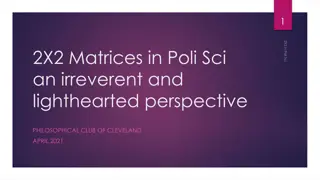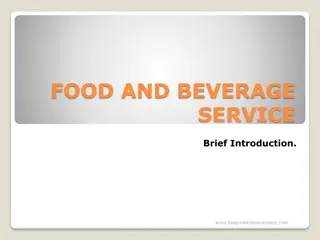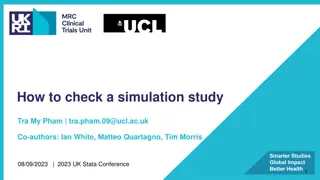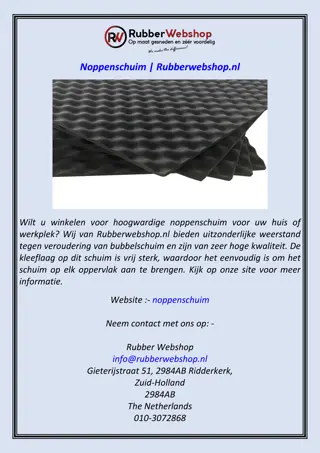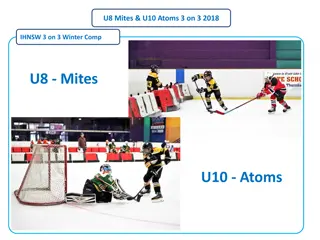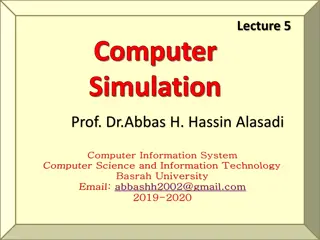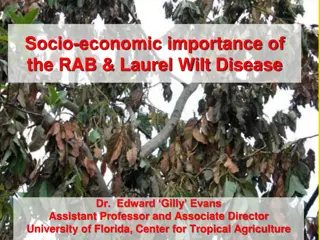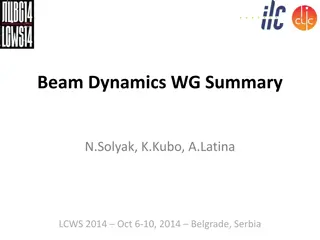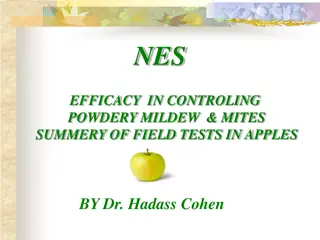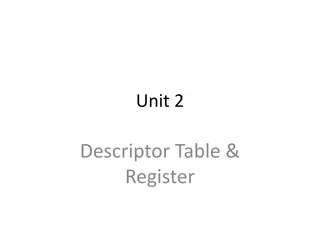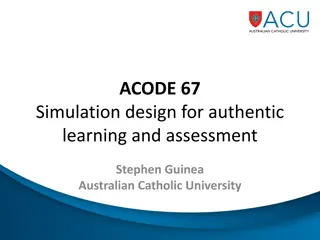Mites and Wilt Disease: Simulation in a 2x2 Table
Researchers investigate the impact of spider mite infestation on plant resistance to Wilt disease using a randomized experiment. A physical simulation involving cards helps students explore the relationship between categorical variables, risk calculation, and prediction making in an introductory statistics setting.
Download Presentation

Please find below an Image/Link to download the presentation.
The content on the website is provided AS IS for your information and personal use only. It may not be sold, licensed, or shared on other websites without obtaining consent from the author. Download presentation by click this link. If you encounter any issues during the download, it is possible that the publisher has removed the file from their server.
E N D
Presentation Transcript
Mites and Wilt Disease - Using Simulation to Examine a 2 x 2 Table Alicia Gram Department of Mathematics and Statistics Smith College, Northampton, MA agram@smith.edu January 26, 2010
Acknowledgements and References Original idea for this activity was developed by Nick Horton. The data for the problem is from Statistics for the Life Sciences, Third Edition; Myra Samuels & Jeffrey Witmer (2003), p 409.
Classroom Context Liberal Arts College Introductory statistics class Class size is around 25 Prerequisite High School Algebra Class takes place in a computer lab Fathom software is used throughout the course Students are required to have a calculator (does not need to be a graphing calculator) Activity occurs at the beginning of the discussion of relationships between categorical variables.
Overview: Start with a real-world situation. Define the statistic of interest. Have students conduct a physical simulation using cards, look at the distribution of the statistic. Incorporate computer technology to automate the simulation. Question of interest: Are the observed sample statistics and those more extreme, surprising or rare? Or is the observed sample statistic explainable by chance? (Lane-Getaz, S. , 2006).
Objectives: Define and identify explanatory and response variables. Learn how to calculate risk and relative risk. Examine data in a two-way and make a prediction about the association between the two variables. Define an extreme event. Assess the strength of the relationship without formal inference procedures.
In the Classroom: Materials: Handout for each student with problem and questions for investigation. One deck of cards for each student. Mechanism to create dot plot (either flipchart paper and markers or a classroom computer and display) Access to computer to conduct computer simulation.
Problem: Researchers were interested in attack of a plant by one organism induced resistance to subsequent attack by a different organism. Individually potted cotton plants were randomly allocated to two groups: infestation by spider mites or no infestation. After two weeks the mites were dutifully removed by a conscientious research assistant, and both groups were inoculated with Verticillium, a fungus that causes Wilt disease.
Problem: Data table: Treatment Mites 15 11 26 No Mites 4 17 21 Response No Wilt Disease Wilt Disease Total We consider plants who do not contract Wilt disease as successfully treated. Question: Do the data provide sufficient evidence to conclude that infestation with mites induces resistance to Wilt disease?
In the Classroom: Discussion starts with the definition of risk of getting Wilt disease (and not getting Wilt disease) for the two groups and the Relative Risk. Students calculate the risks and relative risk for the data table.
In the Classroom: From the calculation of the risks, students observe that there is a difference between the two groups. Students are introduced to the random variable X = of plants in the mites group that did not develop Wilt disease, and asked what events would be more extreme than the one that was observed?
In the Classroom: Use of simulation to explore whether we would expect to see such a large difference in the risk of Wilt disease in the two groups is due to chance.
Physical Simulation Each student is given a deck of cards and the following instructions: Sampling Process: a. Select 47 cards from a standard 52 card deck, 26 black cards (mites) and 21 red cards (no mites) b. Shuffle the cards well. c. Deal out 19 cards, and count the number of black cards (number of plants with mites that did not have Wilt disease) d. Repeat steps b-c three more times (four total) e. When you are done, add your results to the data table on the class computer.
Results of Physical Simulation Dot Plot Collection 1 0 2 4 6 8 10 12 14 16 18 20 black = 15 Students are asked to make observations about the distribution including the an estimate for the average number of mites/no disease cases and the variability of the observations. Students calculate the proportion of times that a count of 15 or more was observed from the class data. In this case, the proportion is 3/84 = 0.035. Would like to have more evidence before making a conclusion.
Computer Simulation Options: Build in Fathom Two-way Table Simulation from Rossman/Chance Applet Collection http://www.rossmanchance.com/applets/Friendly1/friendly1.html
Two-way Table Simulation from Rossman/Chance Applet Collection http://www.rossmanchance.com/applets/Friendly1/friendly1.html
Assessment Opportunities: Students had the opportunity to find their own (small) data set and explore the relationship between the two variables using Fathom as a tool for simulation.
References: Barbella, P. D., Lorraine; Landwehr, James. (1990). Beyond exploratory data analysis: The randomization test. Mathematics Teacher, 83(2), 144-149. Lane-Getaz, S. (2006). What is statistical thinking and how is it developed? In G. E. Burrill, P. (Ed.), Thinking and Reasoning with Data and Chance (pp. 273-289). Reston: NCTM. Moore, D. (1997). New pedagogy and new content: The case of statistics. International Statistical Review, 65(2).






